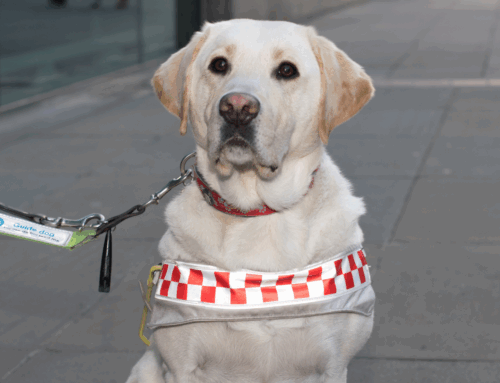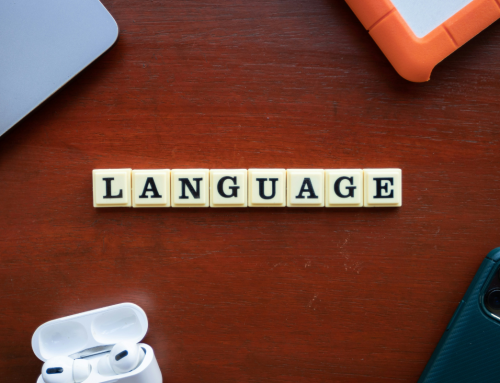Follow our simple guide and learn how to communicate effectively with Deaf or hearing-impaired colleagues. Note that people who are Deaf with a capital D use British Sign Language (BSL) as their first language and are culturally Deaf.
Okay, are you ready for our tips?
1. ‘Oh, it doesn’t matter.’
This is the most infuriating and frustrating thing you can say to someone with hearing loss. It’s incredibly rude to give up on the exchange just because you aren’t getting an answer quickly enough. And it excludes Deaf or hearing-impaired colleagues from potentially important conversations.
If you’re struggling to get your message across try using alternative words, or write down what you want to say. Try harder, and remember that accents and big bushy beards can be barriers to lipreading.
2. Gain attention and maintain eye contact
Before you start talking make sure that you have the attention of the person you want to communicate with. And in group conversation ensure that you maintain eye contact, so your deaf colleague can lipread.
3. Volume and Speed
Speak clearly at a normal speed. Honestly, unless you are talking at a hundred miles an hour slowing your speech down won’t help. Believe us when we say that shouting makes no difference either.
4. Body Language and Nonverbal Cues
Deaf and hearing-impaired colleagues can’t hear the tone, volume or emphasis on words. In order to understand the context of a conversation they rely on your body language, facial expression and eye contact. A smile, frown or hand gesture can provide clarity.
5. Location, location, location!
As much as we love Kirsty and Phil this tip has nothing to do with property. If you need to have a long conversation with Deaf or hearing-impaired colleagues, please find a quiet space. Busy locations are full of sound vibrations and visual distractions, making it harder to listen, sign and lipread.
6. Ask the question!
‘Hey Rik, is there anything I can do to improve our conversations?’ Now you might get a reply about cracking better jokes but as everyone has different levels of hearing it’s advisable to ask the question.
Technology is often the solution. An example being the use of Skype rather than phone, as facial expressions and gestures are visible.

These top tips were provided by Claire Holland, our Deputy CEO and Head of Training. At Enhance The UK we offer general disability awareness training for in-house teams. And we teach British Sign Language courses – our pass rate is excellent.
Get in touch to learn how we can support your organisation in creating an accessible and inclusive workplace. Or join us on twitter @EnhanceTheUK .



